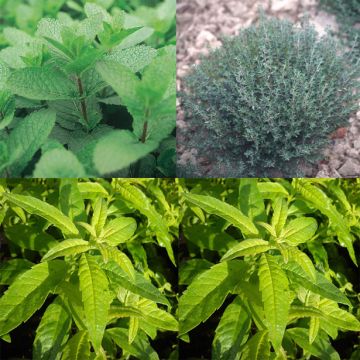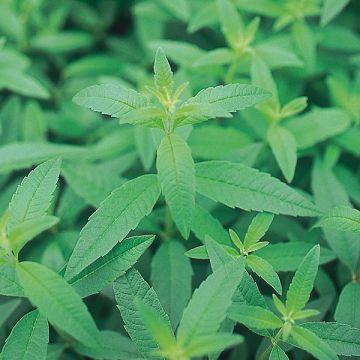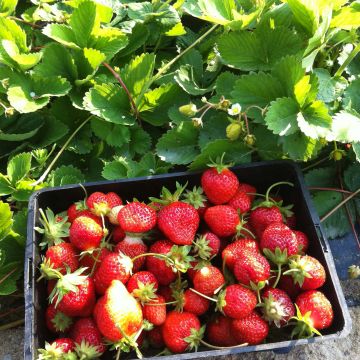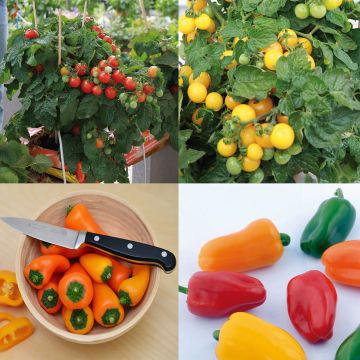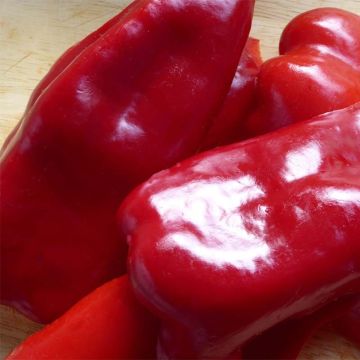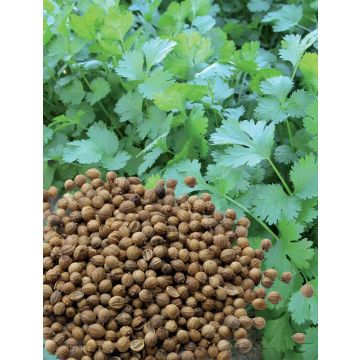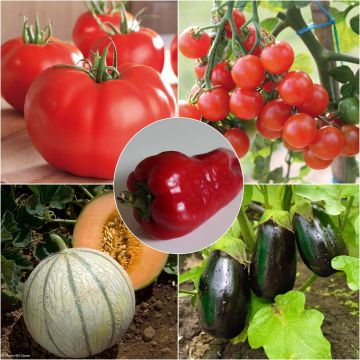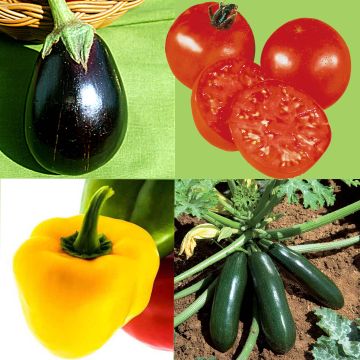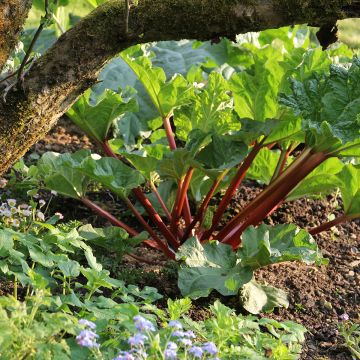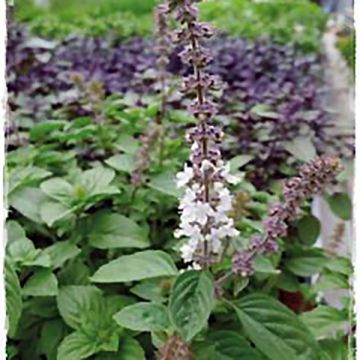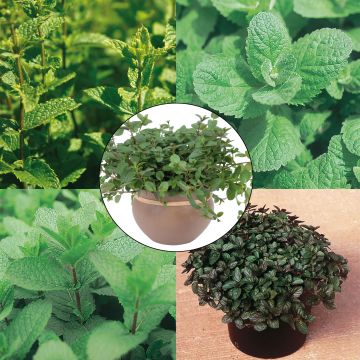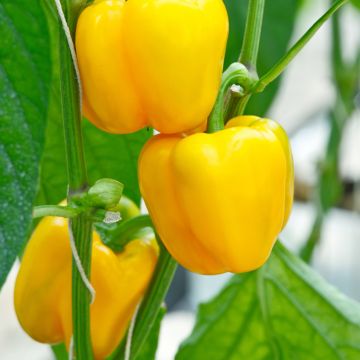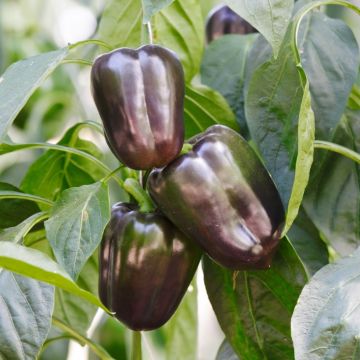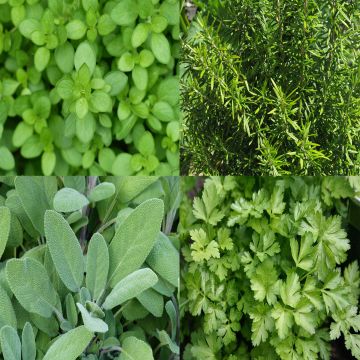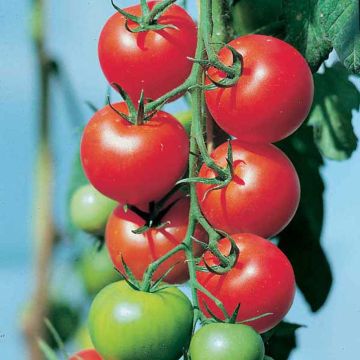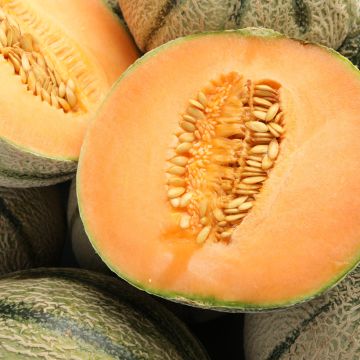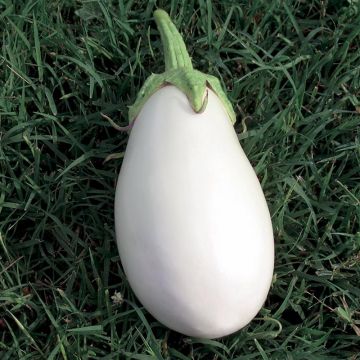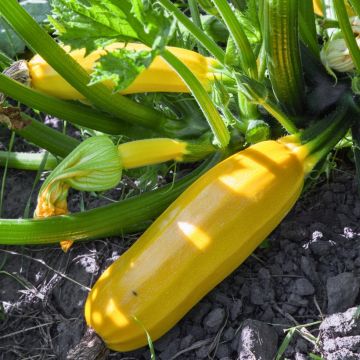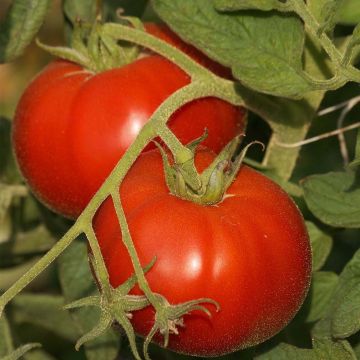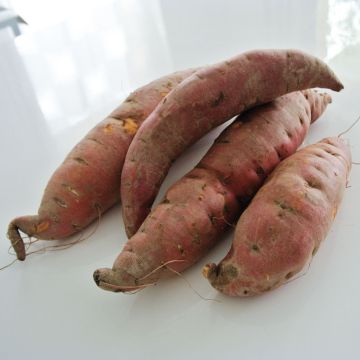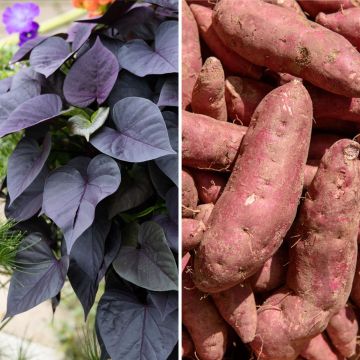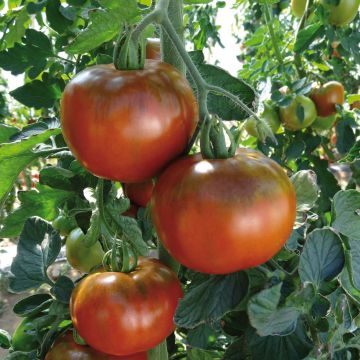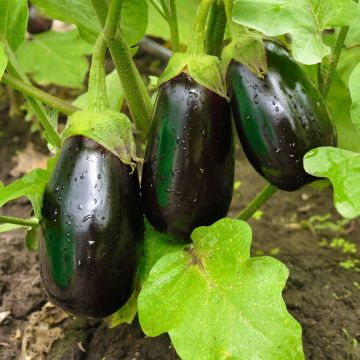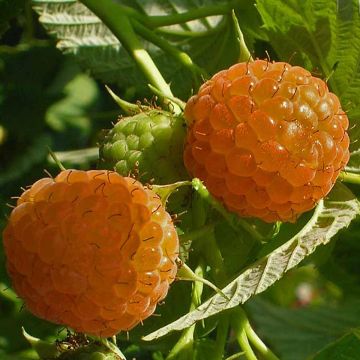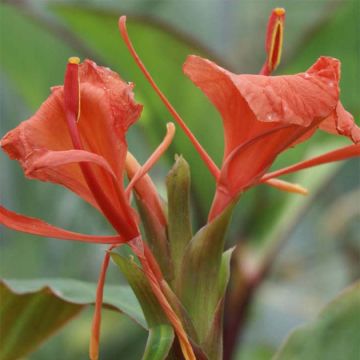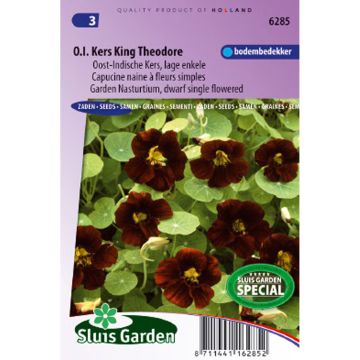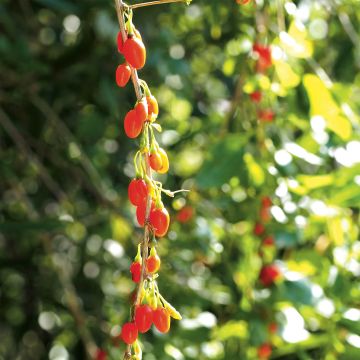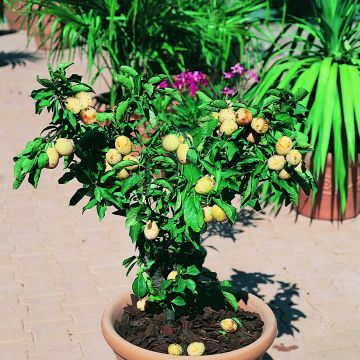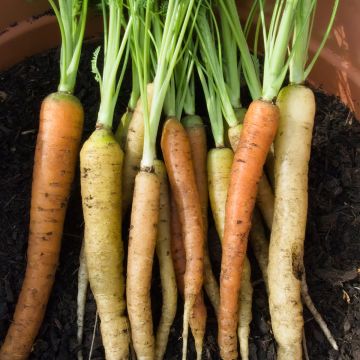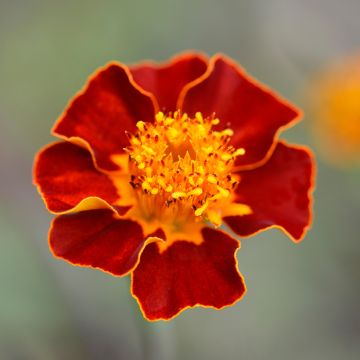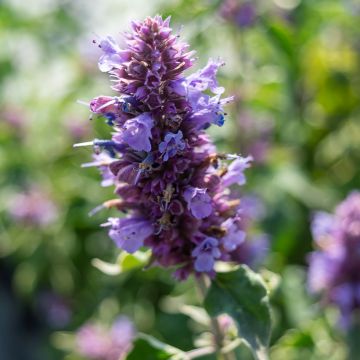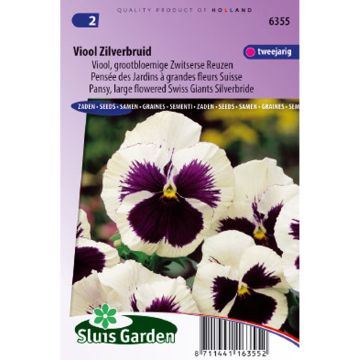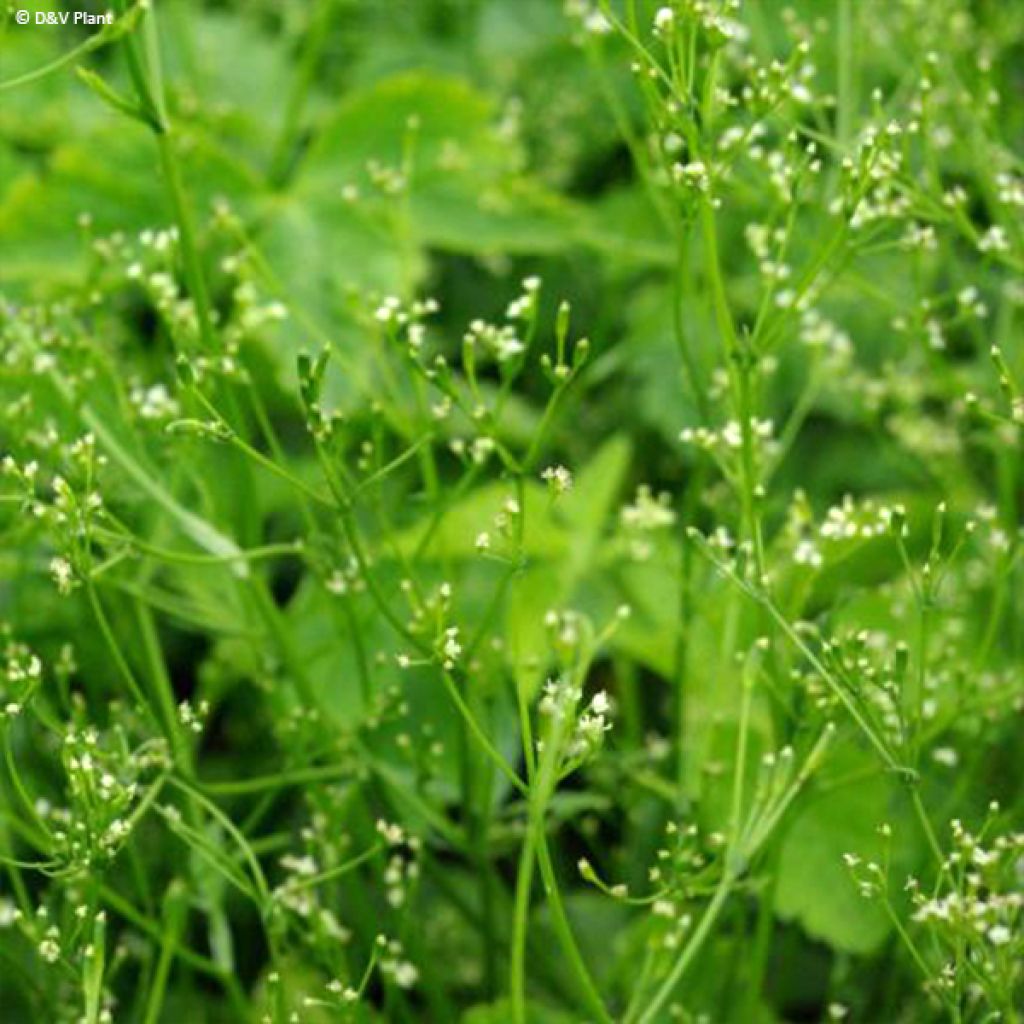

Persil japonais - Cryptotaenia japonica
Mitsuba ,Japanese Parsley - Cryptotaenia japonica
Cryptotaenia japonica
Japanese hornwort, Japanese parsley, Mitsuba
Why not try an alternative variety in stock?
View all →This plant carries a 6 months recovery warranty
More information
We guarantee the quality of our plants for a full growing cycle, and will replace at our expense any plant that fails to recover under normal climatic and planting conditions.
From €5.90 for pickup delivery and €6.90 for home delivery
Express home delivery from €8.90.
Description
Cryptotaenia japonica, or Japanese parsley, is a hardy perennial that is deciduous in winter. Highly valued in Japanese cuisine, it is characterised by its remarkable aromatic flavour. It is similar to angelica, but milder and more refreshing than our parsley. Its stems are long and its leaves are divided into 3 toothed leaflets. The leaves are used cooked in soups or raw to enhance salads. Plant Japanese parsley in shade or partial shade, from March to May, in both open ground and pots. Harvest from spring to summer, as needed.
Japanese parsley belongs to the Apiaceae family, like its cousin parsley. It is native to northeastern Asia (Japan, Korea, coastal areas of China), as well as northwestern North America. It is an aromatic herbaceous plant, perennial from its stump, capable of living several years in the garden. It can withstand temperatures as low as -18°C (-0.4°F). Its above-ground growth develops in spring, but disappears in winter. The light green leaves darken as they grow and mature. They are divided into 3 strongly toothed leaflets. It bears small white star-shaped flowers in summer.
Japanese parsley is crunchier in texture than our parsley and its flavour is more subtle. It is used in the same way as parsley: raw, chopped in salads, marinades, or cooked in soups. This herb is widely used to flavour traditional Japanese dishes, including sushi. It holds up well during cooking, and can be boiled, steamed, or stir-fried. It goes well with fried fish, and is also used in garnishes for grills. Add it at the end of cooking to retain its crunchiness and flavour. The root is also edible and can be cooked with other vegetables.
Harvesting: cut with scissors or by pinching as needed. Cutting stimulates the plant and encourages new shoots.
Preservation: Japanese parsley is best consumed fresh, but it freezes very well. To do this, wash and let it dry thoroughly. Gather the branches into bundles and put them in a freezer bag. You can then keep it all winter and use it as needed. If you prefer to let it dry, wash the branches, wipe them carefully, then let the bunches hang upside down in a dry place. When the branches become brittle, crumble them and transfer to an airtight container.
The gardener's tip: mulch the soil in summer to maintain moisture and save on watering, as Japanese parsley prefers cool understory and does not tolerate drought or scorching sun. Mulching also reduces weeds. Add compost at planting.
Report an error about the product description
Harvest
Plant habit
Foliage
Other Vegetable plants A to Z
Planting and care
Plant from April to September. You can plant it in a vegetable patch and/or in a pot. It prefers fresh undergrowth, partial shade, and rich, light, non-drying soil that is not waterlogged.
In open ground
A few months before planting, loosen the soil and add well-rotted compost by raking it in 5cm (2in) deep. Space the plants 25cm (10in) apart in all directions. Dig a hole, place the root ball, and cover with fine soil. Firmly press down and water to keep the soil moist.
Regularly hoe and weed, especially at the beginning of cultivation. Use mulch to maintain moisture in summer.
In a pot
Take a fairly large pot and place a layer of gravel at the bottom to facilitate drainage. Fill the pot with a mixture of potting soil and garden soil, gently place your plant, and cover with soil. Firmly press down and water to keep the soil moist.
During cultivation, water moderately, especially in summer. The growing medium should not completely dry out.
Cultivation
Care
Intended location
This item has not been reviewed yet - be the first to leave a review about it.
Themed vegetable gardens
Haven't found what you were looking for?
Hardiness is the lowest winter temperature a plant can endure without suffering serious damage or even dying. However, hardiness is affected by location (a sheltered area, such as a patio), protection (winter cover) and soil type (hardiness is improved by well-drained soil).

Photo Sharing Terms & Conditions
In order to encourage gardeners to interact and share their experiences, Promesse de fleurs offers various media enabling content to be uploaded onto its Site - in particular via the ‘Photo sharing’ module.
The User agrees to refrain from:
- Posting any content that is illegal, prejudicial, insulting, racist, inciteful to hatred, revisionist, contrary to public decency, that infringes on privacy or on the privacy rights of third parties, in particular the publicity rights of persons and goods, intellectual property rights, or the right to privacy.
- Submitting content on behalf of a third party;
- Impersonate the identity of a third party and/or publish any personal information about a third party;
In general, the User undertakes to refrain from any unethical behaviour.
All Content (in particular text, comments, files, images, photos, videos, creative works, etc.), which may be subject to property or intellectual property rights, image or other private rights, shall remain the property of the User, subject to the limited rights granted by the terms of the licence granted by Promesse de fleurs as stated below. Users are at liberty to publish or not to publish such Content on the Site, notably via the ‘Photo Sharing’ facility, and accept that this Content shall be made public and freely accessible, notably on the Internet.
Users further acknowledge, undertake to have ,and guarantee that they hold all necessary rights and permissions to publish such material on the Site, in particular with regard to the legislation in force pertaining to any privacy, property, intellectual property, image, or contractual rights, or rights of any other nature. By publishing such Content on the Site, Users acknowledge accepting full liability as publishers of the Content within the meaning of the law, and grant Promesse de fleurs, free of charge, an inclusive, worldwide licence for the said Content for the entire duration of its publication, including all reproduction, representation, up/downloading, displaying, performing, transmission, and storage rights.
Users also grant permission for their name to be linked to the Content and accept that this link may not always be made available.
By engaging in posting material, Users consent to their Content becoming automatically accessible on the Internet, in particular on other sites and/or blogs and/or web pages of the Promesse de fleurs site, including in particular social pages and the Promesse de fleurs catalogue.
Users may secure the removal of entrusted content free of charge by issuing a simple request via our contact form.
The flowering period indicated on our website applies to countries and regions located in USDA zone 8 (France, the United Kingdom, Ireland, the Netherlands, etc.)
It will vary according to where you live:
- In zones 9 to 10 (Italy, Spain, Greece, etc.), flowering will occur about 2 to 4 weeks earlier.
- In zones 6 to 7 (Germany, Poland, Slovenia, and lower mountainous regions), flowering will be delayed by 2 to 3 weeks.
- In zone 5 (Central Europe, Scandinavia), blooming will be delayed by 3 to 5 weeks.
In temperate climates, pruning of spring-flowering shrubs (forsythia, spireas, etc.) should be done just after flowering.
Pruning of summer-flowering shrubs (Indian Lilac, Perovskia, etc.) can be done in winter or spring.
In cold regions as well as with frost-sensitive plants, avoid pruning too early when severe frosts may still occur.
The planting period indicated on our website applies to countries and regions located in USDA zone 8 (France, United Kingdom, Ireland, Netherlands).
It will vary according to where you live:
- In Mediterranean zones (Marseille, Madrid, Milan, etc.), autumn and winter are the best planting periods.
- In continental zones (Strasbourg, Munich, Vienna, etc.), delay planting by 2 to 3 weeks in spring and bring it forward by 2 to 4 weeks in autumn.
- In mountainous regions (the Alps, Pyrenees, Carpathians, etc.), it is best to plant in late spring (May-June) or late summer (August-September).
The harvesting period indicated on our website applies to countries and regions in USDA zone 8 (France, England, Ireland, the Netherlands).
In colder areas (Scandinavia, Poland, Austria...) fruit and vegetable harvests are likely to be delayed by 3-4 weeks.
In warmer areas (Italy, Spain, Greece, etc.), harvesting will probably take place earlier, depending on weather conditions.
The sowing periods indicated on our website apply to countries and regions within USDA Zone 8 (France, UK, Ireland, Netherlands).
In colder areas (Scandinavia, Poland, Austria...), delay any outdoor sowing by 3-4 weeks, or sow under glass.
In warmer climes (Italy, Spain, Greece, etc.), bring outdoor sowing forward by a few weeks.

































